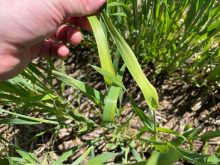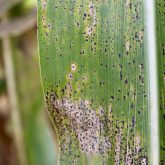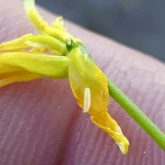Canola growers in northeastern Ontario’s Clay Belt are being encouraged to reexamine their crop rotation plans as the region deals with an outbreak of soil-borne clubroot disease that’s significantly more severe than any previous year.
“Seventy to 80 per cent of the crop looks decent, so it’s not so much for this year that we’re worried, but it’s more for the future,” said Ontario Canola Growers chair Will Runnalls, who farms near Latchford.
Why it matters: There are effective fungicide treatments for clubroot when it infects canola-related brassica plants in horticultural settings, but those treatments aren’t economical on a field scale so growers’ only options are preventive.
Read Also

Maizex brings Elite forage seeds under its brand umbrella
The seed catalogue for Maizex Seeds takes on a different look for its 2026 edition thanks to the introduction of a new marketing initiative dubbed “Ration 365.”
Clubroot, which transforms itself from a spore into a “zoospore” that can travel short distances in water, has been problematic on the Prairies for decades. Genetically resistant seed varieties were developed, but resistance to those genes began appearing in the West in 2013. More recent research led to discovery of a second genotype of clubroot resistance but, for now, it is commercially available in only one seed variety.
That means it isn’t a great time for the disease to make its first widespread move into northeastern Ontario.
“Clubroot has been in the area for quite a few years but it’s just in this last year that it has really exploded” in the Clay Belt, Runnalls said. Numerous fields have little to no crop growing in headlands or field entrances and, upon closer inspection, it’s clear this is due to clubroot.
“In another rotation (when canola is grown again on that field), we’re probably going to see those bare patches out into the field. We’ve gone from ‘it’s not even a problem’ to ‘there’s nothing we can do about it’.”
Runnalls noted that, from 2012-16, swede midge took a heavy toll on spring canola in the region and many farmers stopped growing it. In subsequent years, however, acreage has gradually crept up and spring canola once again plays a significant role in the crop rotation of many area farmers.
On the Runnalls farm, they’ve typically grown spring canola followed by wheat – either winter wheat if the canola crop is harvested early enough or spring wheat in the subsequent year, followed by soybeans, oats and then back to canola in a four-year rotation. This year, with sudden encroachment by clubroot, he said producers may consider expanding rotations to five or six years.
Runnalls thinks he’ll likely slot in another crop of beans to extend his farm’s rotation.
“That way, if you’re growing canola this year with a first-generation (clubroot-resistant) genotype and you come back in six years with a second-generation, that could give you as long as a 12-year break” to disrupt the resistance.
Given the disease-causing spores’ potential to persist several years in the soil, long-recognized clubroot control measures are also crucial. Key strategies are restricting soil movement and eliminating between-crop host plants.
Canola has numerous relatives in the weed community, including shepherd’s purse, stinkweed and wild mustard, that can also serve as clubroot hosts. Controlling those weeds, as well as volunteer canola, in subsequent crop years is essential.
Runnalls said clubfoot in one field could mean it’s present across the entire farm. It just takes a bit of dirt on a combine, sprayer, tractor, workboot or pickup truck to transport spores to someone else’s farm. Make sure dirt is removed, sanitize all equipment and be careful when moving from farm to farm.
“We really need to try and restrict our movement, both on foot and in our trucks and equipment,” he said.













